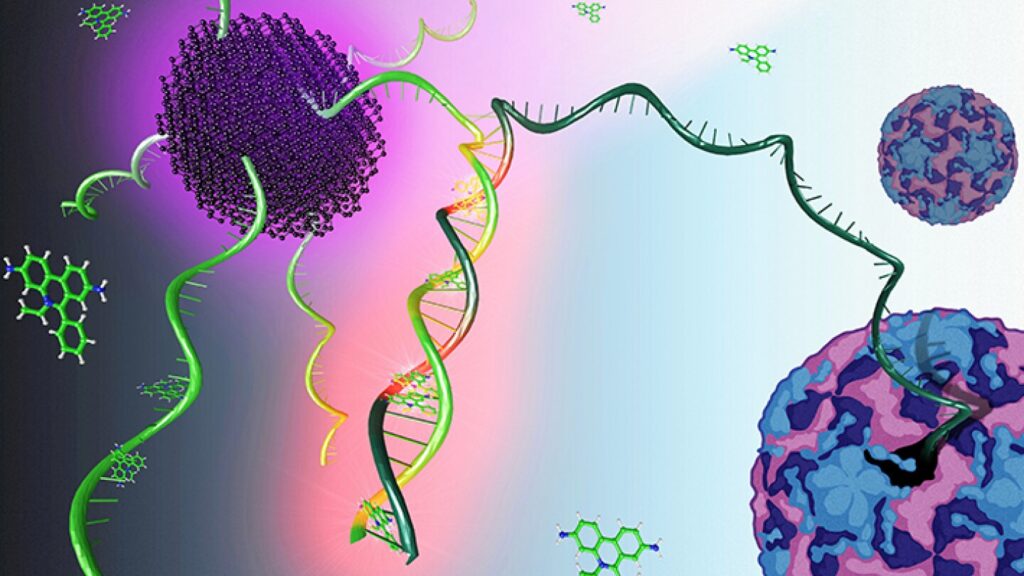In a significant advancement, researchers from the Nanoscience Center (NSC) at the University of Jyväskylä, Finland, have unveiled an innovative, label-free ratiometric fluorosensor designed for the selective and sensitive detection of enteroviral RNA. The research promises to deliver even more advanced and effective detection methods, reinforcing the importance of interdisciplinary collaboration in addressing global health challenges.
Viruses pose a severe threat to global health, as evidenced by recent pandemics. Early detection and identification are crucial for preventing new outbreaks. Traditional detection methods, while effective, often lack the possibility to give spatiotemporal information of virus genome release.
“This interdisciplinary effort, combining expertise from biology, chemistry, and physics, marks a significant advancement in viral detection technology. We have developed an enhanced ratiometric fluorosensor using carbon dots (CDs) functionalized with Probe (single stranded complementary oligonucleotide fragment) and ethidium bromide (EB), for detection of enteroviral RNA,” says professor of physics Jussi Toppari from the University of Jyväskylä.
The paper is published in the journal Carbon.
Innovative ratiometric fluorosensor for viral detection
Fluorescent nanoparticles have emerged as powerful tools for bioanalyte sensing, with CDs leading the way due to their simple synthesis, exceptional photostability, tunable photoluminescence, excellent aqueous solubility, biocompatibility, and versatile surface functionalities for ligand conjugation. These unique properties position CDs as a game-changer in the field of biosensing.
“This so-called Functionalized Sensor (Func Sensor), where CDs are functionalized i.e., covalently bonded with the probe clearly outperforms the more traditional approach of Non-Functionalized Sensor (Non-Func Sensor) which is a simple mixture of CDs, probe, and EB,” explains Doctoral Researcher Amar Raj from University of Jyväskylä.

In both sensors, the presence of target DNA, hybridizing with the probe, enhanced EB fluorescence, while CD fluorescence changed slightly due to electron transfer, enabling ratiometric detection and was ultrasensitive.
“The Non-Func Sensor showed a lower sensitivity with target DNA and was not effective with real enteroviral RNA samples, while the Func Sensor showed a higher sensitivity with DNA and real viral RNA, exhibiting clearly improved selectivity,” comments Postdoctoral Researcher Abhishek Pathak. He worked earlier as a Postdoctoral Researcher at the University of Jyväskylä.
The superior performance of the Func Sensor is attributed to enhanced charge transfer due to covalent functionalization.
“Our proof-of-principle study highlights the importance of covalent immobilization of the probe for improved electron transfer between CDs and EB and thus enhanced performance and demonstrates the suitability of the Func sensor for practical applications in rapid, real-time and precise in situ detection of viral RNA,” says Professor of Cell and Molecular Biology Varpu Marjomäki from University of Jyväskylä.
In particular, the research shows that the Func sensor can detect enteroviral RNA release from the capsid in real-time in vitro. “This means that the Func sensor can be used as a novel viral RNA sensing platform which offers a much-needed possibility to detect real-time viral RNA appearance during infection,” says Marjomäki.
Toward safer research
This pioneering work by the research team not only demonstrates a novel method for detecting viral RNA but also sheds light on the charge transfer mechanisms between fluorophores. Building on this success, the research team is now working to make the system more robust by replacing the potentially hazardous dye ethidium bromide with the much safer, less cytotoxic biocompatible dyes.
“This enhancement will further improve the safety and efficacy of in vivo viral RNA detection,” says Pathak.


